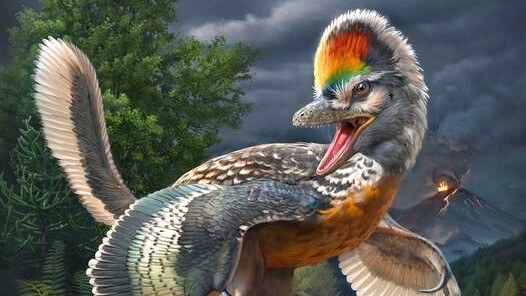Birds, believed to have evolved from theropod dinosaurs in the Late Jurassic, pose a challenge to researchers due to a scarcity of early Avialae fossils from that era.
The only definitive avialans discovered thus far originate from the Middle–Late Jurassic Yanliao Biota in northeast China (166–159 million years ago) and the slightly more recent German Solnhofen Limestones, which yielded the famous Archaeopteryx. This leaves a significant gap of approximately 30 million years before the earliest known Cretaceous bird records. The fossils from the Jurassic avialans are instrumental in unraveling the evolutionary genesis of the characteristic avialan body structure and in resolving the phylogenetic dispute regarding bird origins.
A collaborative team from the Institute of Vertebrate Paleontology and Paleoanthropology (IVPP) of the Chinese Academy of Sciences in Beijing and the Fujian Institute of Geological Survey (FIGS) has presented a new entrant into this lineage: a 150-million-year-old avialan theropod from Zhenghe County, Fujian Province.
Published in Nature on September 6, the findings introduce a novel species dubbed Fujianvenator prodigiosus. This avialan displays an amalgamation of features shared with other avialans, troodontids, and dromaeosaurids, showcasing the influence of evolutionary mosaicism in the early phases of bird evolution.
Dr. Wang Min, lead and corresponding author of the study from IVPP, noted, “Our comparative analyses show that marked changes in body plan occurred along the early avialan line, which is largely driven by the forelimb, eventually giving rise to the typical bird limb proportion. However, Fujianvenator is an odd species that diverged from this main trajectory and evolved bizarre hindlimb architecture.”
The notably elongated lower leg and other morphological traits, coupled with geological evidence, suggest Fujianvenator inhabited a swamp-like habitat and was either a swift runner or a long-legged wader, presenting a previously undocumented ecological niche for early avialans.
Xu Liming from FIGS, lead author of the study, pointed out, “Besides Fujianvenator, we have found abundant other vertebrates, including teleosts, testudines and choristoderes.”
During the Late Jurassic–Early Cretaceous period, southeastern China experienced vigorous tectonic activities due to the subduction of the paleo-Pacific plate, resulting in widespread magmatism and concurrent fault-depression basins. It was within one such basin that Fujianvenator was unearthed. This geological backdrop mirrors that of the Late Jurassic in north and northeastern China, where the older Yanliao Biota is located.
Dr. Zhou Zhonghe from IVPP, co-author of the study, emphasized, “The extraordinary diversity, unique vertebrate composition, and paleoenvironment strongly indicate that this locality documents a terrestrial fauna, which we named the Zhenghe Fauna.” Through in-situ radioisotopic dating and stratigraphic surveys, the Zhenghe Fauna is dated to the period from 150–148 million years ago. Consequently, Fujianvenator stands as one of the geographically southernmost and stratigraphically youngest members of the Jurassic avialans.
The discovery of the Zhenghe Fauna provides fresh insights into the Late Jurassic terrestrial ecosystem, prompting the collaborative research team from IVPP and FIGS to continue their investigations in Zhenghe and its adjacent regions.


